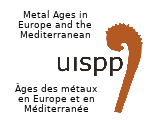In the autumn of 2020, during metal detector survey, part of a Late Bronze Age (LBA) metal hoard was discovered in Vatta-Telekoldal-dűlő (Northeast Hungary). Although the hoard had been heavily disturbed by agricultural activities, 14 objects were unearthed in situ in a fragmentary preserved ceramic vessel. Intensive surveys of the surrounding area revealed several other objects possibly belonging to the hoard. The in situ assemblage consists mostly of broken artefacts: various tools (axes, sickles and a saw), several rings and fragments of a few other objects can be identified.
The paper aims to discuss the challenges and the preliminary results of the interdisciplinary investigation of a Late Bronze Age scrap hoard from the Carpathian Basin. Our research addresses questions regarding the LBA inhabitation of the close vicinity of the newly discovered hoard and the compositional pattern of the assemblage. Several artefacts from the assemblage were selected for chemical analyses. By using a portable ED-XRF spectrometer, initial insights have been gained about the copper alloys used for the objects. As regards the chemical composition of the finds examined, mainly the variation in the tin content was remarkable (1-15 wt%), and this also allowed the pieces to be well grouped. However, interesting correlations were found between the proportions of tin and other constituents (lead, arsenic, antimony, and silver). The combined results from the archaeometallurgical and use-wear analyses indicate a diverse hoard composition in which both raw metals, miscast and used artefacts played a role.

 PDF version
PDF version
